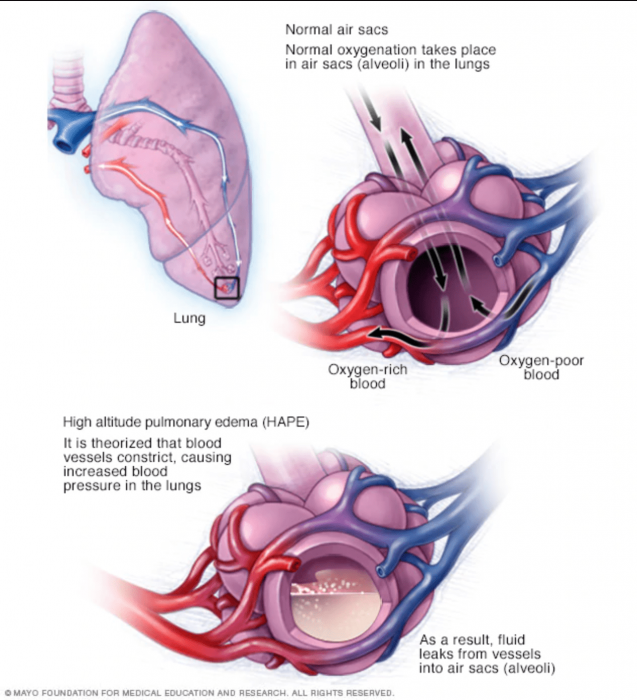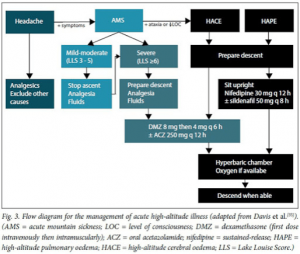
According to an investigation report in the Academic Forensic Pathology journal published in 2018, an estimated 30 million people travel to high elevations every year in the western United States alone. Every single time a person travels to high elevations, they put themselves at risk for experiencing high-altitude pulmonary edema, more commonly known as HAPE. This sometimes-overlooked high-altitude illness (HAI) typically occurs when residents of low elevation areas ascend quickly to 2500m (8292ft) above sea level or higher. HAPE can lead to difficulty breathing, coughing up mucus, and in severe cases, can prove to be fatal.

HAPE is part of a group of high-altitude illnesses, including Acute Mountain Sickness (AMS) and High-Altitude Cerebral Edema (HACE). Much about the illness is still unknown, but scientists have recently theorized that HAPE is caused when additional pressure is put on lung vessels (due to increased elevation), which causes fluid from blood vessels to leak into the alveoli (air sacs), which in turn prevents you from breathing. See diagram on right.
HAPE is relatively uncommon; a study conducted in Vail, Colorado, from 1975 – 1982 reported only around 0.01 – 0.1% of visitors got HAPE. Another study done in 2013 by Chen et al. found that out of the 339 volunteers, only 2 developed HAPE. Although it is very uncommon, it is still important to be aware of its potential to be deadly.
How Do You if You Have HAPE?
It is typical for HAPE to start to affect patients two to seven days after traveling to an elevation above 2500m. Some of the symptoms of HAPE include shortness of breath, coughing, especially when coughing up mucus or white fluid, wheezing, and/or chest pains. It is important to realize that other illnesses, such as AMS and HACE, can present similar symptoms associated with HAPE. It is important to consult professional medical advice if you are ever concerned you may have it.
When is HAPE Fatal?
HAPE is only really fatal when there is a lack of medical services available when a person falls ill to it. If you are able to seek medical attention and/or descend to a lower elevation, HAPE is easily treatable.

Precautionary Steps When Travelling to Higher Elevations:
HAPE can affect anyone, no matter how physically fit or in shape you may be, although people who are obese, have had previous cases of high-altitude illness, or pre-existing cardiopulmonary disease are considered to be at higher risk. Although HAPE affects a very small number of people, if you want to take some precautionary steps that will help prevent you from potentially getting HAPE, AMS, or HACE, here are some tips, according to the experts.
- Take your time while ascending to high altitudes. Instead of doing it in one day, spread your ascent over two or three days to allow your body to adjust easier.
- Avoid using alcohol or drugs while adjusting to higher elevations.
- While adjusting to altitude for the first couple of days, try avoiding exercise, as it can worsen or exacerbate circumstances.
Although HAPE can be a serious illness that can prove fatal in extreme circumstances, do not get too worried about it. Recent studies have proven that while up in the mountains, there are many other factors such as hypothermia, avalanches, and more that are much more important to be aware of. At the end of the day, the message is clear – the mountains are dangerous and if you ever decide to adventure up into them, whether that is for skiing, hiking, biking, or any other means, make sure you are aware and prepared for the risks at hand.